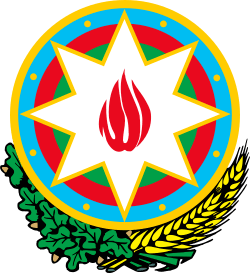Culture of Azerbaijan
| Part of a series on the |
| Culture of Azerbaijan |
|---|
 |
| History |
| People |
| Languages |
|
Mythology and folklore |
| Cuisine |
| Religion |
| Sport |
|
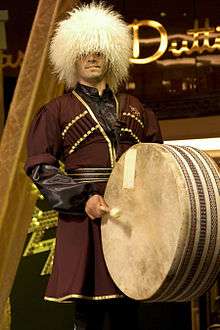
The Culture of Azerbaijan (Azerbaijani:Azərbaycan mədəniyyəti) developed under the influence of Iranian, Turkic and Caucasian heritage as well as Russian influences due to its former status as a Soviet republic. Today, western influences, including globalized consumer culture, are prevalent.
History
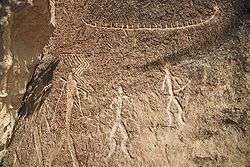
Azerbaijan is the modern name of a historical and geographic region on the border of Eastern Europe and Western Asia, and formerly known as Aran or Ardan by various Persian Empires, or by Albania by Greeks. It is bounded by the Caspian Sea to the east, Russia's Daghestan region to the north, Georgia to the northwest, Armenia and Turkey to the southwest, and Iran to the south. Azerbaijan is a home to diverse ethnicities, majority of which are Azeris, an ethnic group which numbers close to 10 million in the independent Republic of Azerbaijan.
The heritage, culture, and civilization of this region today known as the country of Azerbaijan has both ancient and modern roots. The people of the modern country of Azerbaijan are believed to be inheritors of various ancient civilizations and peoples, including the indigenous Caucasian Albanians tribes such as Scythians and Alans, and the later arrival of Oghuz Turks, among others (note that several modern peoples of the Caucasus can trace their ancestries to more than one of these same ancient peoples).
Caucasian Albania

Caucasian Albanians are believed to be the earliest inhabitants of the land above the Aras river today known as Azerbaijan. Early invaders included the Iranian Scythians in the 9th century BCE.[1] The South Caucasus was eventually fully assimilated and conquered by the Persian Achaemenids around 550 BCE. Zoroastrianism was already prevalent among the Medes in the lands below and above the Aras river, and long before the Acheamenids assimilated these lands into the eventual empire. The Achaemenids in turn were defeated by Alexander the Great in 330 BCE. Following the decline of the Seleucids in Persia in 247 BCE and the succession by the Parthians, the Caucasian Albanians established a kingdom in the 1st century BCE and largely remained independent under Parthian rule, until the Sassanids made the kingdom a province in 252 CE.[2][3] Caucasian Albania's ruler, King Urnayr, officially adopted Christianity as the state religion in the 4th century CE, and Albania would remain a Christian state until the 8th century.[4][5] Sassanid control ended with their defeat by Muslim Arabs in 642 CE,[6] through the Muslim conquest of Persia.
Islamic period

Well before Islam arrived in the region, the region above the Aras river today known as Azerbaijan, Armenia and Georgia, was for centuries under Sassanid Iranian rule, and before that under Parthian Iranian rule. Muslim Arabs defeated the Sassanids and Byzantines as they marched into the Caucasus region. The Arabs made Caucasian Albania a vassal state after the Christian resistance, led by Prince Javanshir, surrendered in 667. Between the 9th and 10th centuries, Arab authors continued to refer to the region between the Kura and Aras rivers as Arran.[lower-alpha 1] During this time, Arabs from Basra and Kufa came to Aran and seized lands that the indigenous peoples had abandoned; the Arabs became a land-owning elite.[7] Despite pockets of continued resistance, the majority of the inhabitants of Azerbaijan converted to Islam. Later on in the 10th and 11th centuries, Kurdish dynasties of Shaddadid and Rawadid ruled parts of Aran.
Seljuqs and successor states
The Seljuq period of Azerbaijan's history was possibly even more pivotal than the Arab conquest as it helped shape the ethno-linguistic nationality of the modern Azerbaijani Turks.
After decline of Abbasid Khalifate, the territory of Azerbaijan was under the sway of numerous Iranian dynasties such as the Salarids, Sajids, and Shaddadids. However at the beginning of the 11th century, the territory was gradually seized by waves of Oghuz Turkic tribes emanating from Central Asia. The first of these Turkic dynasties was the Ghaznavids from present-day northern Afghanistan, who took over part of Azerbaijan by 1030. They were followed by the Seljuqs, a western branch of the Oghuz who conquered all of Iran and the Caucasus and pressed on to Iraq where they overthrew the Buyids in Baghdad in 1055.
The Shirvanshahs
Shīrwān Shāh[8] or Sharwān Shāh,[8] was the title in medieval Islamic times of Azerbaijani people.[8] The Shirvanshah established a dynasty that ruled over the Aran region (present-day Azerbaijan Republic) as well as parts of Dagestan,[9] and were rulers of Shirvan, a historical region in present-day Azerbaijan Republic. The Shirvanshahs established the longest Islamic dynasty in the Islamic world.
Safavids and the rise of Shi'a Islam
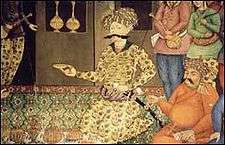
The Safavid (Safaviyeh) were a Sufi religious order formed in the 1330s by Sheikh Safi-ad-din Ardabili (1252–1334), after whom it was eponymously named.
This Sufi order openly converted to the heterodox branch of twelver Shi'a Islam by the end of the 15th century. Some Safavid followers, most notably the Qizilbash Turks, believed in the mystical and esoteric nature of their rulers and their relationship to the house of Ali, and thus, were zealously predisposed to fight for them. The Safavid rulers claimed to be descended from Ali himself and his wife Fatimah, daughter of the Prophet Muhammad, through the seventh Imam Musa al-Kazim. Qizilbash numbers increased by the 16th century and their generals were able to wage a successful war against the Ak Koyunlu state and capture Tabriz.
The Safavids, led by Ismail I, expanded their base, sacking Baku in 1501 and persecuting the Shirvanshahs.
From Iranian rule to Russian rule
The region of Aran had been under subsequent Persian-based empires since millennia, with the last one being the Qajar dynasty. Following their defeat by Imperial Russia, Qajar Persia was forced to sign the Treaty of Gulistan in 1813, which acknowledged the loss of the territory of Aran (today known as the country of Azerbaijan), Dagestan, and Georgia to Russia. Local khanates were either abolished (like in Baku or Ganja) or accepted Russian patronage. Another Russo-Persian war in 1826-28, while starting off with a loss for the Russians, eventually resulted in the final crushing defeat for the Iranian army. The Russians dictated another final settlement as per the Treaty of Turkmenchay, which resulted in the Qajars of Persia officially ceding all their Caucasian territories in 1828. The treaty established the current borders of Tsarist Russia and Iran. and divided the Azerbaijani people between two nations; Iran and Azerbaijan. Until 1918, the region was still known as Aran, until the Mussavatis, renamed the region as Azerbaijan, resembling the historical name of the Iranian province of Azarbaijan. In the Russian-controlled territories, two provinces were established that later constituted the bulk of the modern Republic - Elisavetpol (Ganja) province in the west, and Shamakha province in the east.
Azerbaijan Democratic Republic
At the collapse of the Russian Empire in 1917, an independent republic was proclaimed in Tbilisi on May 28, 1918 following an abortive attempt to establish a federal Transcaucasian Republic with Armenia and Georgia. This was the first Democratic Republic established in Islamic World.
Among the important accomplishments of the Parliament was the extension of suffrage to women, making Azerbaijan the first Muslim state in the world to give women equal political rights with men. In this accomplishment, Azerbaijan preceded even such developed countries as the United Kingdom and the United States. Another important accomplishment of ADR was the establishment of Baku State University, which was the first modern-type university founded in Azerbaijan.
Architecture
.jpg)
Architecture in the country of Azerbaijan typically combines elements of East and West. Many ancient architectural treasures such as the Maiden Tower and Palace of the Shirvanshahs in the walled city of Baku are old Iranian architecture, and survive in modern country of Azerbaijan. Among other medieval architectural treasures reflecting the Iranian roots of architecture in the region are the Shirvan shahs' palace in Baku, the palace of the Shaki Khans in the town of Shaki in north-central Azerbaijan, the Surakhany Temple on the Apsheron Peninsula, a number of bridges spanning the Aras River, and several mausoleums. In the 19th and early 20th centuries, little monumental architecture was created, but distinctive residences were built in Baku and elsewhere. Among the most recent architectural monuments, the Baku subways are noted for their lavish decor.
Development in the 19th century
The most typical distinguishing features of Azerbaijan's architecture in the 19th century were the expansion of towns, application of Russian town-planning principles and the development of the general layouts of Ganja, Shemakha and Baku.
The construction of advanced buildings, after Northern Azerbaijan was ceded to Russia, had a significant importance. New buildings such as theaters, schools, hospitals, and houses were constructed in the middle of the 19th century. The establishment and continuous development of capitalist relations produced a strong impact on the architectural development of Azerbaijan. The peculiarities of Azerbaijani architecture can easily be found in Baku buildings that were built during the period of oil industry development in the 19th-20th centuries. Baku was becoming one of the largest cities in Russia.
Development in the 20th century
The first stage of the architectural development in Azerbaijan during the Soviet period was related the construction of the working settlements of Binagadi, Rasulzade, Bakikhanov, Montino, Mammadyarov around Baku. Working settlements in Absheron were the first examples of young Soviet architecture.
A number of schools were built in Baku and other cities of Azerbaijan during 1933-1936. Four-storied buildings, constructed upon projects by S.Dadashov and M.Useynov in Baku and other towns of the country, distinguish for expressiveness of architectural solutions. Classic forms along with national architecture traditions are typical for these projects.
The projecting and construction of the Neft Dashlari (Oil Stones) - steel pillar settlements in the open sea - heralded the beginning of a new era in post-war architecture. The Neft Dashlari was built in connection with the discovery of rich oil fields in the Caspian Sea in 1949. This extraordinary settlement includes dwelling houses, cultural objects, overpasses, etc.
The new period in town-building and architectural development of Azerbaijan began in Azerbaijan in the 1960s. Baku, the capital of the Republic of Azerbaijan, grew into a large capital city during these years. This was also the time of erection of wonderful architectural ensembles and advanced buildings, which defined the city image.
Cinema

The film industry in Azerbaijan dates back to 1898. In fact, Azerbaijan was among the first countries involved in cinematography: it is not surprising that this new medium soon showed up in cosmopolitan nouveau-riche Baku at the turn of the 19th century.[10]
Cuisine
The Azerbaijani cuisine, throughout the centuries, has been influenced by the foods of different cultures due to political and economic processes in Azerbaijan. Still, today's Azerbaijani cuisine has distinctive and unique features. Many foods that are indigenous to the country can now be seen in the cuisines of other cultures. For the Azerbaijanis, food is an important part of the country's culture and is deeply rooted in the history, traditions and values of the nation.
Pomegranate Festival

Every year a cultural festival is held in Goychay, Azerbaijan known as Pomegranate Festival. The festival features Azerbaijani fruit-cuisine mainly the pomegranates from Goychay. At the festival, a parade is held with traditional Azerbaijani dances and Azerbaijani music.[11]
The Pomegranate Festival usually takes place in October.
Dance
There are a number of Azerbaijani dances, these folk dances of the Azerbaijani people are old and extremely melodious. It is performed at formal celebrations and the dancers wear festival clothes. It has a very fast rhythm, so the dancer must have inherent skill.[12]
Azerbaijan's national dance shows the characteristics of the Azerbaijani nation. These dances differ from other dances with its quick temp and optimism. And this talks about nation's braveness. The national clothes of Azerbaijan are well preserved within the national dances.[13]
Examples
Abayi (Azerbaijani: Abayı) is an Azerbaijani dance with its origins from Shaki and Zaqatala region of Az
- [erbaijan. The subject matter of the dance is middle age. In this area middle-aged people are called "Abayi" and this kind of dance is generally performed by middle-aged men or women. Creators of the melody of this dance are the Shaki composers. It is a little exaggerating and funny and has a slow dancing tempo. This kind of dance used to be performed in group formerly, but later on changed to an individual dance.[14]
- Agir Karadagi (Azerbaijani: Ağır Qaradağı - meaning heavy Karadakhi]) is Azerbaijani melody of a dance that is created in Karadakh. It is very popular in Shaki and Zaqatala in Azerbaijan and performed slowly.
- Alcha Gulu (Azerbaijani: Alça gulu - meaning Plum Flower) is an Azerbaijani-Indian dance created between 1910 and 1920 in Shaki region by Ali Karimov who lived in Kalva village. It is performed by women and has a fast dancing tempo.
- Anzali (Azerbaijani: Ənzəli) is the melody of a dance which is almost created in the years 1880-1890 in Baku. It is performed slowly and for this reason it is suitable for old people. "Anzali" dance is a traditional dance. It is performed at the first of the marriage. In origin the old people perform this dance. But the young people besides can perform it.
- Asma Kasma (Azerbaijani: Asma Kəsmə - meaning Hanging Cutting) is one of the oldest Azerbaijani dances which is current in marriage. Its name comes from music by the name of "Asma-Kasma" and they use this music when they escort the bride to the bridegrooms home and women dance in the opposite of the bride. Its velocity is slow and a little exaggerative and full of jumps.
- Asta Karabagi (Azerbaijani: Asta Qarabağı - meaning Slow Karabakhi) is an Azerbaijani dance with its origins from Karabakh. Its arrangement of movements is fixed and it has a slow dancing tempo.
- Avari (Azerbaijani: Avarı - meaning of Avari) is appointed to the Avari people who live in Azerbaijan. "Avari" dance is very popular in Azerbaijan. It consists of three parts. At first it is slow, and little by little becomes faster, and at the end part it changes to the quick rhythm of the Lezginka music.
- Ay bari bakh (Azerbaijani: Ay bəri bax - meaning look at me) is one of the oldest dances that is performed only by women.
- Banovsha (Azerbaijani: Bənövşə - meaning Violet) is performed with his feelings, showing how the violet grows from the ground, blooms and fades.
- Birilyant (Azerbaijani: Birilyant - meaning Brilliant) is an Azerbaijani dance which has two different kinds. One of them is created in Baku in the years 1920-1922. Its tempo is fast. This one is performed by men. The second one is only for women. Its music is performed elegant and melodious. Its velocity is slow.
- Ceyrani or Ceyran bala is an old and delicate dance. This dance shows the gazelle's gracefulness and elegance. It is performed by men and women.
- Chichekler (meaning flowers in Azeri) is a very elegant dance. In origin this dance is performed by women in two different forms: slow and fast. It was created in 1910. The group of girls gathers together and collect flowers. They would like to show off and demonstrate to the public how pretty flowers look. Flowers are associated with how pretty the girls are in the colorful costumes. They form circles and triangles during the dance. Sophisticated hand movements and spins create very cheerful atmosphere. The music is up-bit and energetic.[15]
- Choban Regsi (meaning Tribesmen Dance in Azeri) is danced only by male performers. The costume is typical to the rural areas and particular to shepherds. The music is up-bit and energetic. This dance symbolizes a cheerful spirit of the shepherd who brings his herd to the valley.
- Innabi (Azerbaijani: İnnabı - meaning name of a fruit) is a girl's dance and performed by one or two girls. The dancers show a woman's airs and graces as well as coquetry.
- Gangi (Azerbaijani: Cəngi - meaning Dagger) (martial music) calls all people to unity, friendship and invincibility.[16]
- Halay (Azerbaijani: Yalli) propagates unanimity, unity and collectiveness. It is a very old and very custom dance in Azerbaijan. At first times, it was performed in form of traditional celebration of fire, which was source of heat, light, and warm food. In this traditional celebration, dancers worship fire as a goddess. Yally starts with a slow speed and finishes in the fast mode with fast steps in form of running. There are many kinds of Yally in Azerbaijan. This dance is performed by a group of people and in ancient times whoever didn't dance properly was fined by the chieftain who makes him sing a song or dance another dance.
- Lezginka (Azerbaijani: Ləzgi) is a national dance of Lezghins popular among many people in the Caucasus Mountains. It derives its names from the Lezgin people; Azerbaijanis have their own versions.
- Mirzayi (Azerbaijani: Mirzəyi) is traditionally played at wedding parties and performed by men and women with handkerchiefs in their hands.
- Nalbeki (Azerbaijani: Nəlbəki - meaning saucer) is a dance performed only by women, during the dance saucers are used.
- Ouch noumra, dourd noumra, besh noumra, alti noumra (Azerbaijani: 3 nümrə. 4 nümrə. 5 nümrə. 6 nümrə. - meaning No.3, No.4, No.5, No.6) are all dance melodies composed in the second half of the 1920s in Baku, capital city of Azerbaijan. These dances, especially No.5 and No.6, are still famous. Dance No.3 and No.5, which have slow tempos and doleful melodies, are performed by women. Dance No.4 and No.6 have a slightly faster tempo and are performed by both women and men.
- Terekeme (Azerbaijani: Tərəkəmə) is a dance of a tribesmen. Those who are dancing extend their arms and go forward with their heads up. This dance is filled with the feelings of freedom and expansiveness. Both men and women perform it.
- Uzundara (Azerbaijani: Uzundərə - meaning Long Valley) is an extremely attractive, elegant and lyrical dance performed by women. This dance is mostly popular in Azerbaijan, Armenia and Georgia. The song originates in a valley between Agdam and Prishib (Azerbaijani: Prişib) village in Karabakh area by the name of "Uzun dara". In Azerbaijani traditions this dance is also performed when the bride and bridegroom are on the road.
- Vagzali (Azerbaijani: Vağzalı) is played when the bride is seen off from her family house to the house of the bridegroom and her departure is reflected in this dance.[17]
- Zorkhana is a men's dance which brightly symbolizes courage, bravery and youthful enthusiasm.
Folk art

Over the ancient history of Azerbaijan the Azeris have created a rich and distinctive culture, a major part of which is decorative and applied art. This form of art rooted in hoary antiquity is represented by a wide range of handicrafts, such as chasing, jeweler, engraving in metal, carving in wood, stone and bone, carpet-making, lasing, pattern weaving and printing, knitting and embroidery. Each of these types of decorative art, evidence and endowments of the Azerbaijan nation, is very much in favor here. Many interesting facts pertaining to the development of arts and crafts in Azerbaijan were reported by numerous merchants, travelers and diplomats who had visited these places at different times.
Azerbaijani rugs

Azerbaijani rugs are a product of Azerbaijan, an ancient center of carpet weaving. Azerbaijan has been since the ancient times known as a center of a large variety of crafts. The archeological dig on the territory of Azerbaijan testifies to the well developed agriculture, stock raising, metal working, pottery and ceramics, and last but not least carpet-weaving that date as far back as to the 2nd millennium BC.
Azerbaijani carpets can be categorized under several large groups and a multitude of subgroups. The true scientific research of the Azerbaijani carpet is connected with the name of Latif Kerimov, a prominent scientist and artist. It was his classification that related the four large groups of carpets with the four geographical zones of Azerbaijan, i.e. Guba-Shirvan, Ganja-Kazakh, Karabakh and Tabriz.
Baku rug
Baku carpets are marked for their increased softness of the material and intense colors, as well as excellent artistic taste and exquisite decoration. This school has about 10 compositions. The historical sources and inscriptions on the carpets testify to the fact that carpet making was widely spread in these villages and carpet-ware was exported outside the country. The carpet composition often includes medallions. They are filled by various motifs, most often by stylized images of plants, which lost their resemblance to the original object after they had been geometrized.
Ganja rug
The carpets of Ganja are notable for peculiarity of their compositions and ornamental patterns. The Ganja carpets include a relatively small number of carpet compositions, all in all between 8 and 20 patterns. The Kazakh carpets cover about 16 compositions with various patterns. Kazakh, which is located on the NW of Azerbaijan, is the most famous carpet production region and also accounts for the Kazakh and Borchaly carpet groups. The Kazakh carpets have a geometrical ornamental pattern, the composition is not very complex with a focus on a schematic presentation of the geometrical patterns, plants and animals. The ornamental decor of the Ganja carpets is rich and diverse, with a focus on geometrical motifs as well as schematic presentation of plants and animals.
Karabakh rug
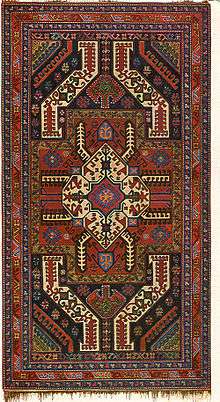
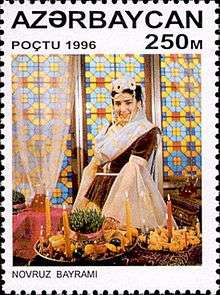
The Karabakh carpet is one of five major regional groups of carpets made in Azerbaijan named after the Karabakh region, which comprises present Nagorno-Karabakh and adjacent lowland territories ('lowland Karabakh').
The Karabakh carpets amount to 33 compositions. Due to the specifics of the local sheep wool the Karabakh carpets are characterized by thick pile, high and fluffy. These carpets are marked for their vivid and joyous colors. They are divided into four groups: without medallions, with medallions, namazlyk and subject carpet. In the mountainous part of Karabakh the carpets were made in Malybeili, Muradkhanly, Dashbulakh, Jebrail, Goradis and many other villages.
Shirvan rug
Shirvan is one of the most ancient historical regions of Azerbaijan. Carpet making of different types is a widespread craft with both settled and nomadic natives. The Shirvan school accounts for carpets manufactured in the following towns and villages of the Shirvan region: Shemaha, Maraza, Akhsu, Kurdamir. The school totals 25 compositions. The Salyan carpets, with similar artistic and technical features, also belong to this school. The Shirvan carpets are characterized by an intricate design, which depicts numerous artifacts of everyday life, birds and people.
Novruz
Azerbaijan is a country where national traditions are well preserved. One of the oldest traditions of the people in this country is the celebration of Novruz and is a cherished holiday of a New Year and spring. It is celebrated on the day of vernal equinox - March 21–22. Novruz is the symbol of nature renewal and fertility. Novrus, also known as Nooroz or Nawruz in other countries, is an ancient celebration shared among peoples living under pre-Islamic Persian Empires.
Cultural festivities during Novruz have striking resemblance to those in other countries of the region, namely Iran. Preparations for Novruz start long before the holiday. Rooted in Zoarastrian beliefs, in preparation for the arrival of the New Year, people do house cleaning, plant trees, make new dresses, paint eggs, make national pastries such as shekerbura, pakhlava and a great variety of local cuisine. As is traditional in other countries that celebrate Novruz, wheat is fried with kishmish (raisins) and nuts (govurga). It is essential for every house to have semeni - sprouts of wheat. As a tribute to fire-worshiping (an ancient Zoarastrian belief) every Tuesday during four weeks before the holiday kids jump over small bonfires and candles are lit, a tradition shared with Iran, where it is called Chahar-shanbeh sori. On the holiday eve the graves of relatives are visited and tended.[18]
Novruz is a family holiday. In the evening before the holiday the whole family gathers around the holiday table laid with various dishes to make the New Year rich. The holiday goes on for several days and ends with festive public dancing and other entertainment of folk bands, contests of national sports. In rural areas crop holidays are marked.
Literature
Azerbaijani Literature refers to the literature written in Azerbaijani, which currently is the official state language of the Republic of Azerbaijan and is spoken by about a quarter of the population of Iran. Its closest relatives are Turkish and Turkmen. Azeri is a dialect of Oghuz branch of Turkic languages, and as such, is mutually intelligible with other Oghuz dialects spoken in Turkey, Iran, Turkmenistan, Georgia, Uzbekistan, Afghanistan, Russia, the Balkans and the Middle East.
It is worth noting that the Azeri Turkic language came into existence with the invasion and settlement of waves of Turkic tribes from Central Asia over several centuries. The indigenous language of the region above and below the Aras river was a mix of Iranian Tati, Taleshi, and Armenian. With the increasing dominance of Turkic rulers, the language of the region gradually was infused with Turkic, resulting in what is known in modern days as the Azeri language.
Taleshi is still a spoken language in parts of the Republic of Azerbaijan.
As a result of the language policy of the Soviet Union, Russian is also commonly spoken as a second language among the urbane.
Classical Era
Apart from the Epic of Dede Korkut, which may date to the 9th century CE.[19] and was first transcribed by the 14th century,[19] the earliest known figure in Azeri literature was Pur Hasan Asfaraini, who composed a divan consisting of Persian and Turkic ghazals.[20][21] In Persian ghazals he used his own name, while his Turkic ghazals were composed under a pen-name of Hasan Oghlu.[20]
Nizami Ganjavi who was born in Ganja is considered the greatest romantic epic poet in Persian literature, who brought a colloquial and realistic style to the Persian epic.[22][23] His heritage is widely appreciated and shared by Azerbaijan, Iran, Afghanistan and Tajikistan.
In the 14th century, Azerbaijan was under the control of Qara Qoyunlu and Aq Qoyunlu Turkic tribal confederacies. Among the poets of this period were Kadi Burhan al-Din, Haqiqi (pen-name of Jahan-shah Qara Qoyunlu), and Habibi.[24] The end of the 14th century was also the period of starting literary activity of Imadaddin Nesimi,[25] one of the greatest Turkic[26][27][28] Hurufi mystical poets of the late 14th and early 15th centuries[29] and one of the most prominent early Divan masters in Turkic literary history,[29] who also composed poetry in Persian[27][30] and Arabic.[29]
Soviet Azerbaijani Literature

Under the Soviet rule, particularly during Joseph Stalin's reign, Azeri writers who did not conform to the party line were persecuted. Bolsheviks sought to destroy the nationalist intellectual elite established during the short-lived Azerbaijan Democratic Republic, and in the 1930s, many writers and intellectuals were essentially turned into mouthpieces of Soviet propaganda.
Influences on Azeri Literature
Persian and Arabic literature have greatly influenced Azeri literature, especially in its classical phase. Amongst poets who have written in Persian and have influenced Azeri literature, one can mention Ferdowsi, Sanai, Hafiz, Saadi, Attar, and Rumi. Arabic literature, especially the Quran and Prophetic sayings, has also played a major role in influencing Azeri literature. Amongst poets who have written in Arabic and have influenced Azeri literature, one can mention Mansūr al-Hallāj who has had a wide-ranging influence in the Sufic literature of the Islamic world.
Journalism
In 1875 Akinchi (Əkinçi / اکينچی ) ("The Ploughman") became the first Azeri newspaper to be published in the Russian Empire. It was started by Hasan bey Zardabi, a journalist and education advocate.[31] Starting in the 1830s several newspapers were published in Iran during the reign of the Azeri speaking Qajar dynasty but it is unknown whether any of these newspapers were written in Azeri.
In the Republic of Azerbaijan recent years, large numbers of Azerbaijani journalists, bloggers, lawyers, and human rights activists have been rounded up and jailed for their criticism of President Aliyev and government authorities.[32]
Music
Music of Azerbaijan includes various styles that reflect influences from the music of the Iran, Caucasus and Central Asia. Azerbaijani music is also similar to Iranian music and Turkish.[33]
Mugam
The classical music of Azerbaijan is called mugam (more accurately spelled muğam), and is usually a suite with poetry and instrumental interludes. The sung poetry sometimes includes tahrir segments, which use a form of throat singing similar to yodelling. The poetry is typically about divine love and is most often linked to Sufi Islam. In contrast to the mugam traditions of Central Asian countries, Azeri mugam is more free-form and less rigid; it is often compared to the improvised field of jazz.[34] UNESCO proclaimed the Azerbaijani mugam tradition a Masterpiece of the Oral and Intangible Heritage of Humanity on 7 November 2003. Meykhana and Mugham are one of the many musical traditions of Azerbaijan. During Mugam, the singers have to transform their emotions into singing and music. Mugham singer Alim Qasimov is revered as one of the five best singers of all time.[35] Meykhana is a kind of traditional Azeri distinctive folk unaccompanied song, usually performed by several people improvising on a particular subject. Among national musical instruments there are fourteen string instruments, eight percussion instruments and six wind instruments.[36]
Mugam Festival
Annually a cultural and musical festival that is held in Shaki, known as Mugam Festival.
The Mugham Festival was founded and is traditionally celebrated in the Azerbaijani city of Shusha. The last Mugham Festival in Shusha took place in 1988. Because of the conflict in the Karabakh region, Shusha has been occupied by Armenian forces since 1992 and all Azeris have fled the city. Today the festival lives on and has been held in Shaki since November 1994. Every year thousands of people participate in this festival.
Meykhana

Meykhana is a distinctive Azerbaijani literary and folk rap tradition,[37] consisting of an unaccompanied song performed by one or more people improvising on a particular subject. The name of this genre comes from the traditional Turkish meyhane (tavern, pub), which itself originated from the Persian words mey (wine) and hane (house).[38] Since medieval times, meyhanes were places where poets would gather exchanging verses in an extemporaneous fashion, sometimes joking and disparaging one another. At the end of the contest, the audience determined which poet had improvised the most elegant and clever verses and declared him the winner. These contests may be compared with modern poetry improvisation contests or even with rap battles.
Musical instruments
Instruments used in traditional Azeri music include the stringed instruments tar (skin faced lute), the kamancha (skin faced spike fiddle), the oud, originally barbat, and the saz (long necked lute); the double-reed wind instrument balaban, the frame drum ghaval, the cylindrical double faced drum naghara (davul), and the goshe nagara (naqareh) (pair of small kettle drums). Other instruments include the garmon (small accordion), tutek (whistle flute), daf (frame drum) and nagara (drum) (barrel drum).
Ashiqs
Ashiqs are traveling bards who sing and play the saz, a form of lute. Their songs are semi-improvised around a common base.
The Ashik tradition in Turkic cultures of Anatolia, Azerbaijan and Central Asia has its origin in the Shamanistic beliefs of ancient Turkic peoples.[39]
National holidays

The most celebrated traditional Azerbaijani holiday is Novruz Bayram, which is the traditional celebration of the ancient New Year. Novruz is a family holiday. In the evening before the holiday the whole family gathers around the holiday table laid with various dishes to make the New Year rich. The holiday goes on for several days and ends with festive public dancing and other entertainment of folk bands, and contests of national sports. During the Soviet Union, celebration of Novruz was generally unofficial, and at times even prohibited.[40] Since the independence of Azerbaijan, Novruz became an official public holiday. Usually preparation for Novruz begins a month prior to the festival. Each Tuesday of the forthcoming 4 weeks is devoted to one of the four elements - water, fire, earth and wind.[41][42]
Other public and traditional holidays include Ramadan, Women's Day, Ramazan Bayrami, Gurban Bayrami, Republic Day, Constitution Day, Victory Day, Armed Forces Day, Salvation Day, Flag Day,[43] and more.
Commemoration and remembrance days include Black January, Khojaly Massacre and the March Days.
State symbols of Azerbaijan include the Eight-pointed star, combined with fire element in the Azerbaijan coat of arms. The Azerbaijani flag dates from the late Azerbaijan Democratic Republic period and became widely used since modern times. Azerbaijan National Anthem contains words by Ahmad Javad, and the music was composed by Uzeyir Hajibeyov.
Religion
Around 93 percent of Azerbaijan's population is nominally Muslim, while about 5 percent of the population adheres to Russian Orthodox Church. Among the Muslim majority, religious observance is relatively low and Muslim identity tends to be based more on culture and ethnicity rather than religion. The Muslim population is approximately 70 percent Shi'a and 30 percent Sunni; differences traditionally have not been defined sharply.
There are fairly sizeable expatriate Christian and Muslim communities in the capital city of Baku; authorities generally permit these groups to worship freely.
Islam
After the collapse of the Soviet Union all religious organizations fell into depression and split into pieces while the Religious Organization of Transcaucasia, Muslims headed by akhund Allanshukur Pashazade elected the sheykhulislam in 1980 intensified its operation and tried to spread its influence to the entire Caucasus under the name of the Caucasus Muslims Department. The measures to implement these attempts were undertaken at the tenth session of the Caucasus Muslims held in Baku in 1998. The opening of CMD representations in Georgia and Dagestan was one of the significant steps in this field.
Christianity
Orthodoxy is currently represented in Azerbaijan by the Russian and Georgian Orthodox churches. The Russian Orthodox Churches are grouped in the Eparchy of Baku and the Caspian region.
The Roman Catholic Church in Azerbaijan is part of the worldwide Roman Catholic Church, under the spiritual leadership of the Pope in Rome. It is one of the least Catholic countries in the world in terms of the number of adherents with only 400 faithful out of a total population of over seven million. About half of the congregation consists of foreigners that work as diplomats or work for oil companies.[44]
Judaism
There are three separate communities of Jews (Mountain Jews, Ashkenazi Jews, and Georgian Jews) in Azerbaijan, who total almost 16,000 combined. Of them, 11,000 are Mountain Jews, with concentrations of 6,000 in Baku and 4,000 in Guba, 4,300 are Ashkenazi Jews, most of whom live in Baku and Sumgayit, and 700 are Georgian Jews.
Zoroastrianism
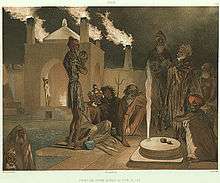
The history of Zoroastrianism in Azerbaijan goes back to the first millennium BC. Together with the other territories of the Persian Empire, Azerbaijan remained a predominantly Zoroastrian state until the Arab invasion in the 7th century AD. The name Azerbaijan means the "Land of The Eternal Fire" in Middle Persian, a name that is said to have a direct link with Zoroastrianism.[45]
Today the religion, culture, and traditions of Zoroastrianism remains highly respected in Azerbaijan, and Novruz continues to be the main holiday in the country. Zoroastrianism has left a deep mark in the history of Azerbaijan. Traces of the religion are still visible in Atashgah, Ramana, Khinalyg, and Yanar Dag.
Cultural reforms
After gaining independence, Azerbaijan has taken important measures throughout the country to protect the cultural values, to enhance the cultural life and began to cooperate with international organizations in this area. A number of important legislative acts have been adopted by the Azerbaijani Parliament so far in the sphere of culture.[46] These decisions are on: “Restoration of the Azerbaijani alphabet based on Latin script” (December 25, 1991); “Mass media” (21 July 1992); “The Copyright Agency of the Republic of Azerbaijan” (10 September 1993); “Advertising” (3 October 1997); “Culture” (6 February 1998); “Protection of historical and cultural monuments" (10 April 1998); “Grants” (17 April 1998); “Freedom of information” (19 June 1998); “Cinematography” (3 July 1998); "Sculpture activities" (3 July 1998); “Tourism” (4 July 1999); “Urban planning” (11 June 1999); “National Archive Fund” (22 June 1999); “Mass media” (8 February 2000); “Museums” (24 March 2000); “Publishing” and etc.[46]
Legal basis of protection of cultural issues, particularly historical and cultural monuments is not only local legislative acts, but also international documents. These documents include the 1954 Hague Convention for the Protection of Cultural Property the Event of Armed Conflict, the 1970 Paris Convention on the Means of Prohibiting and Preventing the Illicit Import, Export and Transfer of Ownership of Cultural Property, the 1995 Convention on Stolen or Illegally Exported Cultural Objects.[46]
Ministry of Culture and Tourism was established in 2006 according to the decree of the Azerbaijani President. Besides preserving the national cultural values of the nation within the country, Azerbaijan cooperates with international organizations like UN, UNESCO, ISESCO, and European Council to get support for forming the international cultural policy[47] and is an active participant of various international projects.[46]
Azerbaijan joined European Heritage Days project initiated by Council of Europe and European Union in 2000. On 26–28 September 2003 European Heritage Days – 2003 Campaign was held in Azerbaijan. During this Campaign it was planned to take part in the opening of monuments that have been restored according to international projects, as well as to review the monuments that are still being restored, to present the exhibition and catalog of the next (8th) Photo experience -2003 International Photo Initiative, to conduct European Common Heritage Program and European Cultural Heritage Campaign at schools and universities.[46]
The topic of the "European Heritage Days" held in Azerbaijan in 2005 was "Civilizations and peacekeeping processes". The campaign consisted of two events:
- Conducting the "East-West" Baku International Festival, which is usually held in an independent form, but included in the Campaign's ideology space in 2005
- Conducting a photo contest of children and youth within the "Photo-experience-2005" event and demonstration of the results at the Republican Youth Forum, besides distribution of "Photo-experience-2005" catalog from Barcelona.[46]
Azerbaijan became the member of UNESCO in 1992, and UNESCO National Commission in Azerbaijan within the Ministry of Foreign Affairs was established according to the decree of the former President Haydar Aliyev in 1994. The heritage of Azerbaijan became the part of world heritage in the result of UNESCO-Azerbaijan relations. Azerbaijan joined the conventions of UNESCO “The preservation of cultural values and heritage”, “The recognition of specialties in higher education, diplomas and degrees”, “The preservation of intangible cultural heritage” and so on.[47]
Two Azerbaijani cultural elements were included in the World Heritage List:
- “Walled City of Baku with the Shirvanshah’s Palace and Maiden Tower” in 2000;
- “Gobustan Rock Art Cultural Landscape” in 2007.[48]
Mugham was included in the list of “Masterpiece of humankind and intangible heritage” in 2003. Besides, intangible cultural elements like “The Art of Azerbaijani Ashiq”, “Novruz”, “Azerbaijani carpet weaving”, “Craftsmanship and performance art of the Tar”, “Chovqan”, “Kelaghayi”, “Copper craftsmanship of Lahij” and "Flatbread making and sharing culture” have been inscribed on the UNESCO Representative List of Intangible Cultural Heritage.[48]
A number of concerts, jubilees, scientific seminars and symposiums, conferences and congresses, meetings and festivities were organized in the framework of UNESCO[47] as “500 anniversary of the birth of Muhammad Fuzuli”(1996), “1300th anniversary of Kitabi-Dada Gorgud” (2000), “800th anniversary of the birth of Nasraddin Tusi” (2001), “200th anniversary of the birth of Mirza Kazimbey” (2002), “100th anniversary of the birth of Mir Jalal Pashayev” (2008), “900th anniversary of achievements of Mahsati Ganjavi” (2013), “100th anniversary of the musical comedy Arshin Mal Alan of Uzeyir Hajibeyli” (2013) and etc.[49]
In 2013 UNESCO and Azerbaijan signed a Framework Agreement on Cooperation in the fields of education, science, culture and communication. To promote and develop the cooperation with UNESCO in the mentioned fields on the basis of equality and mutual benefit is the main objective of this Agreement.[50]
Baku was declared capital of Islamic culture for the year 2009 because of its hosting the 6th Islamic Conference of Culture Ministers.[51] Baku hosted the World forum on Intercultural Dialogue (2011, 2013, 2015, 2017)[52] initiated by Azerbaijan and supported by UNESCO, UN Alliance of Civilizations, Council of Europe, North - South Center of the Council of Europe, ISESCO and the Euronews.[53]
See also
- Ashik Kerib, a film celebrating Azerbaijanian culture
- Azerbaijani people
- Ministry of Culture and Tourism of Azerbaijan
- Women in Azerbaijan
- Azerbaijani Fairy Tales
Notes
- ↑ which is the name used for the region above the Aras river well before the Arabs arrived, and until the Qajar period.
References
- ↑ Azerbaijan - US Library of Congress Country Studies (retrieved 7 June 2006).
- ↑ James Stuart Olson. An Ethnohistorical Dictionary of the Russian and Soviet Empires. ISBN 0-313-27497-5
- ↑ Encyclopædia Britannica: The list of provinces given in the inscription of Ka'be-ye Zardusht defines the extent of the empire under Shapur, in clockwise geographic enumeration: (1) Persis (Fars), (2) Parthia, (3) Susiana (Khuzestan), (4) Maishan (Mesene), (5) Asuristan (southern Mesopotamia), (6) Adiabene, (7) Arabistan (northern Mesopotamia), (8) Atropatene (Azerbaijan), (9) Armenia, (10) Iberia (Georgia), (11) Machelonia, (12) Albania (eastern Caucasus), (13) Balasagan up to the Caucasus Mountains and the Gate of Albania (also known as Gate of the Alans), (14) Patishkhwagar (all of the Elburz Mountains), (15) Media, (16) Hyrcania (Gorgan), (17) Margiana (Merv), (18) Aria, (19) Abarshahr, (20) Carmania (Kerman), (21) Sakastan (Sistan), (22) Turan, (23) Mokran (Makran), (24) Paratan (Paradene), (25) India (probably restricted to the Indus River delta area), (26) Kushanshahr, until as far as Peshawar and until Kashgar and (the borders of) Sogdiana and Tashkent, and (27), on the farther side of the sea, Mazun (Oman)
- ↑ "Albania" - Encyclopedia Iranica, p. 807 (retrieved 15 June 2006).
- ↑ "Voices of the Ancients: Heyerdahl Intrigued by Rare Caucasus Albanian Text" by Dr. Zaza Alexidze - Azerbaijan International, Summer 2002 (retrieved 7 June 2006).
- ↑ "Islamic Conquest."
- ↑ A History of Islamic Societies by Ira Lapidus, p. 48. Cambridge University Press, Cambridge (1988), ISBN 0-521-77933-2 (retrieved 7 June 2006).
- 1 2 3 Barthold, W., C.E. Bosworth "Shirwan Shah, Sharwan Shah. "Encyclopaedia of Islam. Edited by: P. Bearman, Th. Bianquis, C.E. Bosworth, E. van Donzel and W.P. Heinrichs. Brill, 2nd edition
- ↑ Russia and Azerbaijan: A Borderland in Transition, Columbia University, 1995, p. 2, ISBN 0-231-07068-3: "In the fifteenth century this dynasty of Shirvanshahs flourished north of the Araxes."
- ↑ Celebrating 100 Years in Film, not 80 by Aydin Kazimzade. in Azerbaijan International, Vol. 5:1 (Autumn 1997), pp. 30-35.
- ↑ Iguide.travel Goychay Activities: Pomegranate Festival
- ↑ "Culture of Azerbaijan - The Arts and Humanities". Everyculture.com. 1918-05-28. Retrieved 2012-01-26.
- ↑ Azerbaijan - a part of Europe (2007-11-24). "Azerbaijan - a part of Europe". Azeriyoungsters.blogspot.com. Retrieved 2012-01-26.
- ↑ Azerbaijani Dance Archived May 29, 2009, at the Wayback Machine.
- ↑ "Traditional Azeri Dance". Bangkokcompanies.com. Archived from the original on 2013-01-06. Retrieved 2012-01-26.
- ↑ "Embassy of Azerbaijan » National dances". Azerembsof.com. 31 May 2009. Archived from the original on 31 May 2009. Retrieved 21 August 2017.
- ↑ Swiss girls performe Azerbaijani dances Archived May 31, 2009, at the Wayback Machine.
- ↑ "Azerbaijani traditions". Everyculture.com. 1918-05-28. Retrieved 2012-01-26.
- 1 2 Birchwood, Matthew; Dimmock, Matthew (2005). Cultural Encounters Between East and West, 1453-1699. Cambridge Scholars Press. p. 111. ISBN 1-904303-41-2.
- 1 2 Beale, Thomas William; Keene, Henry George (1894). An Oriental Biographical Dictionary. W. H. Allen. p. 311.
- ↑ A. Caferoglu, "Adhari(azeri)", in Encyclopedia of Islam, (new edition), Vol. 1, (Leiden, 1986)
- ↑ Encyclopædia Britannica, "Nezami"
- ↑ Dr. Julie Scott Meisami, "The Haft Paykar: A Medieval Persian Romance (Oxford World's Classics)", Oxford University Press (T), 1995, ISBN 0-19-283184-4, extract
- ↑ Tyrrell, Maliheh S. (2001). Aesopian Literary Dimensions of Azerbaijani Literature of the Soviet Period, 1920-1990. Lexington Books. p. 12. ISBN 0-7391-0169-2.
- ↑ Průšek, Jaroslav (1974). Dictionary of Oriental Literatures. Basic Books. p. 138.
- ↑ Baldick, Julian (2000). Mystical Islam: An Introduction to Sufism. I. B. Tauris. p. 103. ISBN 1-86064-631-X.
- 1 2 Burrill, Kathleen R.F. (1972). The Quatrains of Nesimi Fourteenth-Century Turkic Hurufi. Walter de Gruyter GmbH & Co. KG. ISBN 90-279-2328-0.
- ↑ Lambton, Ann K. S.; Holt, Peter Malcolm; Lewis, Bernard (1970). The Cambridge History of Islam. Cambridge University Press. p. 689. ISBN 0-521-29138-0.
- 1 2 3 "Seyid Imadeddin Nesimi". Encyclopædia Britannica. 2008. Retrieved 2008-01-09.
- ↑ Babinger, Franz (2008). "Nesīmī, Seyyid ʿImād al-Dīn". Encyclopaedia of Islam. Brill Online. Retrieved 2008-01-09.
- ↑ "Welcome to AATT - Affiliates". Princeton.edu. Retrieved 21 August 2017.
- ↑ "Jailed without trial in Azerbaijan," The Washington Post. 1 March 2015. Retrieved 26 September 2015.
- ↑ Almaty or Bust Archived July 15, 2009, at the Wayback Machine., Sultanova and Broughton, pg. 25
- ↑ "EurasiaNet Civil Society - The Baku Jazz Festival: Reviving a Tradition in Azerbaijan". Eurasianet.org. Retrieved 2009-01-03.
- ↑ "Alim Qasimov: the living legend you’ve never heard of" on timesonline.co.uk
- ↑ "The Azerbaijan musical instruments". Atlas.musigi-dunya.az. Archived from the original on 2007-08-26. Retrieved 2007-05-27.
- ↑ Bahl, Taru; Syed, M. H. Encyclopaedia of the Muslim World. Anmol Publications PVT. p. 25. ISBN 978-81-261-1419-1.
- ↑ Zubaida, Sami; Tapper, Richard (1994). Culinary Cultures of the Middle East. IB Tauris in association with Centre of Near and Middle Eastern Studies, School of Oriental and African Studies, University of London. p. 85. ISBN 978-1-85043-742-0.
- ↑ IUE.it - European University Institute, Florence, Italy (retrieved 10 August 2006).
- ↑ Waters, Zena (April–May 2005), "What exactly is Novruz Bayram", Azerbaijan Today (12), archived from the original on 2011-05-14, retrieved 2009-03-22
- ↑ "International Day of Nowruz- 21 March". Azerembassy-kuwait.org. 2010-03-17. Archived from the original on 2011-05-13. Retrieved 2011-01-04.
- ↑ "Azerbaijan marks Novruz holiday". En.trend.az. 2010-03-20. Retrieved 2011-01-04.
- ↑ "Azerbaijan sets National Flag Day". Today.az. Retrieved 2010-05-22.
- ↑ (in Russian) Construction of Catholic Church in Baku Coming to End Archived September 27, 2007, at the Wayback Machine. by R. Manafli. Echo. 8 March 2007
- ↑ "Hankooki.com". Times.hankooki.com. Retrieved 2012-01-26.
- 1 2 3 4 5 6 "Social and cultural issues". Mfa.gov.az (in Azerbaijani). Archived from the original on 2017-11-06. Retrieved 2017-08-15.
- 1 2 3 Aliyeva, Sevdagul (2011). "Chapter 4: Tourism Development, Culture and Cultural Identity, Cross-Cultural Relationships". 6 Silk Road International Conference "Globalization and Security in Black and Caspian Seas Regions" (PDF). pp. 232–236. Archived from the original (PDF) on 2017-11-06.
- 1 2 National Commission of the Republic of Azerbaijan for UNESCO. "Cooperation in the field of culture". Unesco.az. Archived from the original on 2017-11-06. Retrieved 2017-08-15.
- ↑ National Commission of the Republic of Azerbaijan for UNESCO. "The list of anniversaries celebrated in the framework of the UNESCO programme on anniversaries of great personalities and historic events". Unesco.az. Archived from the original on 2017-11-06. Retrieved 2017-08-15.
- ↑ National Commission of the Republic of Azerbaijan for UNESCO. "Framework Agreement". Unesco.az. Archived from the original on 2017-11-06. Retrieved 2017-08-15.
- ↑ "Capitals of Islamic Culture | Islamic Educational, Scientific and Cultural Organization – ISESCO –". Isesco.org.ma. Archived from the original on 2017-11-06. Retrieved 2017-08-15.
- ↑ "Introduction – Baku process". Archived from the original on 2017-11-06. Retrieved 2017-08-15.
- ↑ "About Process – Baku process". bakuprocess.az. Archived from the original on 2017-11-06. Retrieved 2017-08-15.
